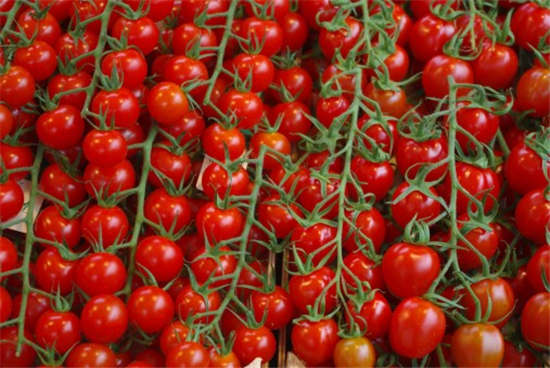When is the vine sweet potato planted? When will it be available? How much is a kilo? How?
Sweet potato, also known as sweet potato, sweet potato, radish, kudzu, etc., is a common herbaceous vine in China. It is widely cultivated because of its rich nutrition and the same high yield as sweet potato. When will the sweet potato (potato) be planted? When will it go on sale? How much is it per jin? How do you plant it?

Planting time:
Generally, the fleshy root of sweet potato can be harvested after sowing for 5 ~ 6 months, the early and medium-hot varieties in the Yangtze River basin are harvested in September, and the mid-late maturity varieties are harvested from late October to early November.
In other words, it can be planted in April-May.
Time to market:
Sweet potatoes mature at the end of autumn. There are two kinds of sweet potato: early-maturing species and late-maturing species, so its ripening period is very long. There are almost fresh sweet potatoes from early September to mid-late November. Sweet potatoes generally begin to grow underground tubers 4 months after planting, but the longer they stay underground, the heavier the moisture is and the sweeter the taste.
Sweet potato, also known as sweet potato, is a herbaceous vine of the genus Leguminosae. It has a large tuber, and its diameter is about 20~30cm, alias sweet potato, sweet potato, sweet potato and so on. It can be eaten as a fruit or vegetable.
Price:
At present, the purchase price of sweet potato market is 1.2 yuan / kg, while the market price is about 1.5-2.5 yuan / kg, so it is not very expensive, but because the local market is different, so the specific price still needs to go to the local inquiry.
Growth cycle:
The growing period of sweet potato is long, and it takes 5 to 7 months to harvest. The growth period is divided into four periods:
Germination period: sowing until the first pair of true leaves unfold.
Seedling stage: the first pair of true leaves spread to the occurrence of 6-7 compound leaves and several lateral roots.
In the budding stage, the stems and leaves grow rapidly and the root tubers begin to form.
Tuber formation period: the tuber root expands rapidly, about 60 days.
It is cultivated in Sichuan, Chongqing, Lianghu, Liangguang and other places in southern China.
Planting techniques:
1. Digging holes. Sweet potatoes need more space than other horticultural vegetables. Each acupoint is 30-60 apart. Centimeters. The depth is 3 cm above the base of the plant to the root of the tuber.
2. Planting. Place the sweet potato seedlings one by one in a pre-dug hole and cover the stem with about 1.5 cm of soil. The leaves of sweet potatoes will grow vines, while the roots will grow tubers 15-30 centimeters deep in the soil.
3. Cover the film. Protect your sweet potatoes in cold weather by covering them with film. This will also help prevent the growth of weeds and the overgrowth of sweet potato vines and rob the tubers of nutrition.
4. Watering. When sweet potatoes are first planted, they need a lot of water. Over time, you should water them less until you only water them about once a week. Start watering every day, and then reduce the frequency of watering week by week.
5. Wait for the tuber to grow up. Sweet potatoes need a relatively long period of growth and can not mature and harvest until early autumn (which coincides with Thanksgiving). Continue to water and weed every week to make the plants grow healthily.
6. Harvest sweet potatoes. About 120 days after planting, the sweet potato should have reached full maturity. If possible, delay harvesting sweet potatoes as much as possible (before the frost), as this will produce bigger and more delicious tubers.
7. Post-harvest treatment of sweet potato. After the sweet potato harvest, must carry on the post-treatment. This is an important step. This makes sweet potatoes more fragrant (they have no fragrance when they are first dug up) and the skin is tougher. Place sweet potatoes at a temperature of 29-35 degrees Celsius and a humidity of 80-90% for 5-10 days. After that, they can be cooked and eaten! A heater and humidifier can be placed in the closet or in a small room to post-process the harvested sweet potatoes.
8. Store your sweet potatoes. One of the benefits of these lovely tubers is that if they are stored properly, they can stay fresh for many months and still taste good. Store them in an open, dry, temperature around 21 degrees Celsius (which means don't refrigerate!) It's a place. Never store sweet potatoes in a plastic bag or sealed container.
Time: 2019-03-18 Click:
- Prev

"one of the three cold friends" bamboo is processed into what makes the most money? When is the best time to plant?
Bamboo is the fastest-growing plant in the world, and it is a perennial subfamily of Gramineae. Bamboo is loved by Chinese people, and growing bamboo can bring a lot of economic resources to farmers, so what is the most profitable processing? When is the best time to plant? When will bamboo be planted?
- Next

How much is the wholesale price of annual herbaceous virgin fruit per jin? What's the latest market? How do you plant it?
Virgin fruit, also known as small tomatoes, small persimmons, cherry tomatoes, cherry tomatoes, is a common annual herb in China, which can be used as a fruit or a vegetable, and often has the effect of invigorating the stomach, clearing heat and detoxification.
Related
- Fuxing push coffee new agricultural production and marketing class: lack of small-scale processing plants
- Jujube rice field leisure farm deep ploughing Yilan for five years to create a space for organic food and play
- Nongyu Farm-A trial of organic papaya for brave women with advanced technology
- Four points for attention in the prevention and control of diseases and insect pests of edible fungi
- How to add nutrient solution to Edible Fungi
- Is there any good way to control edible fungus mites?
- Open Inoculation Technology of Edible Fungi
- Is there any clever way to use fertilizer for edible fungus in winter?
- What agents are used to kill the pathogens of edible fungi in the mushroom shed?
- Rapid drying of Edible Fungi

